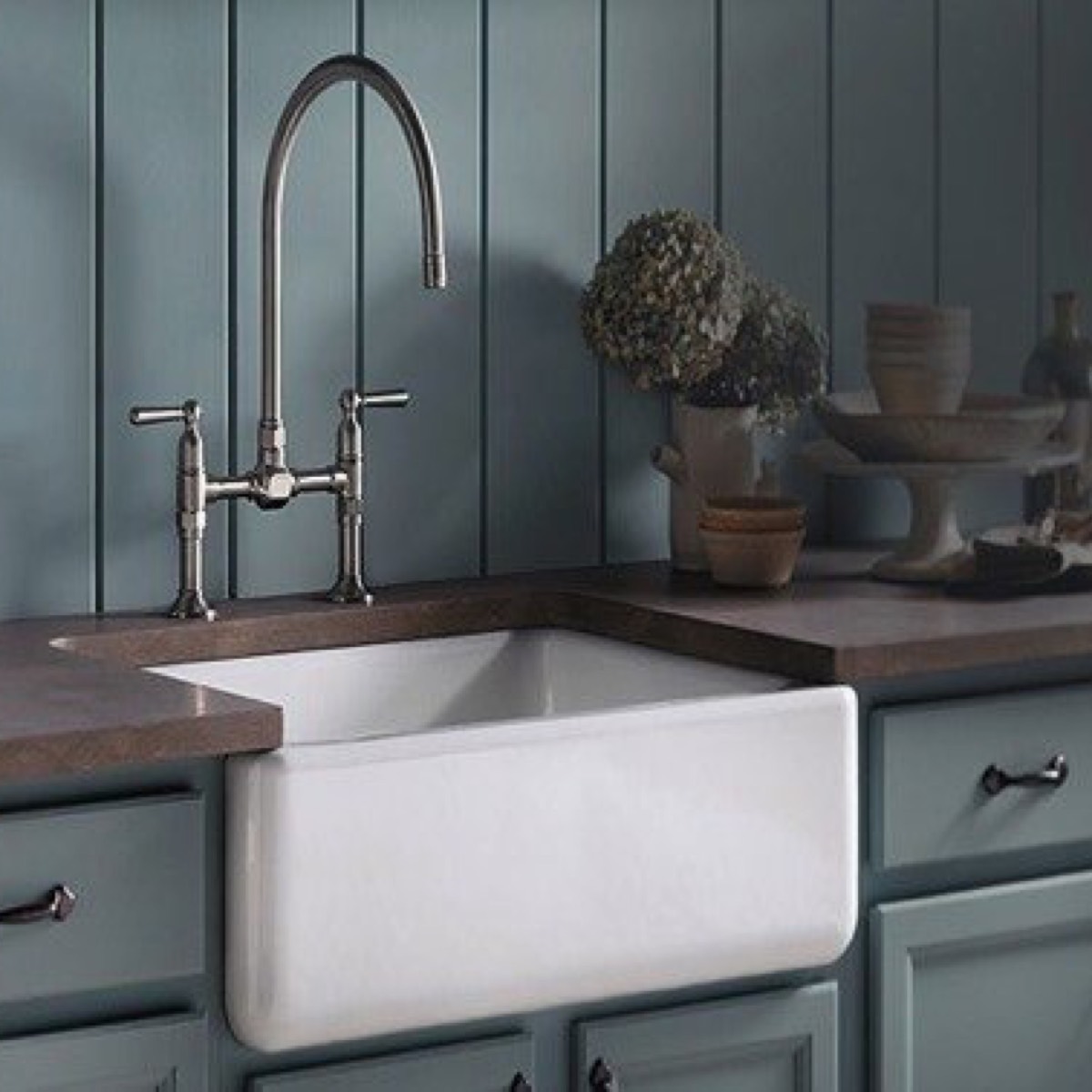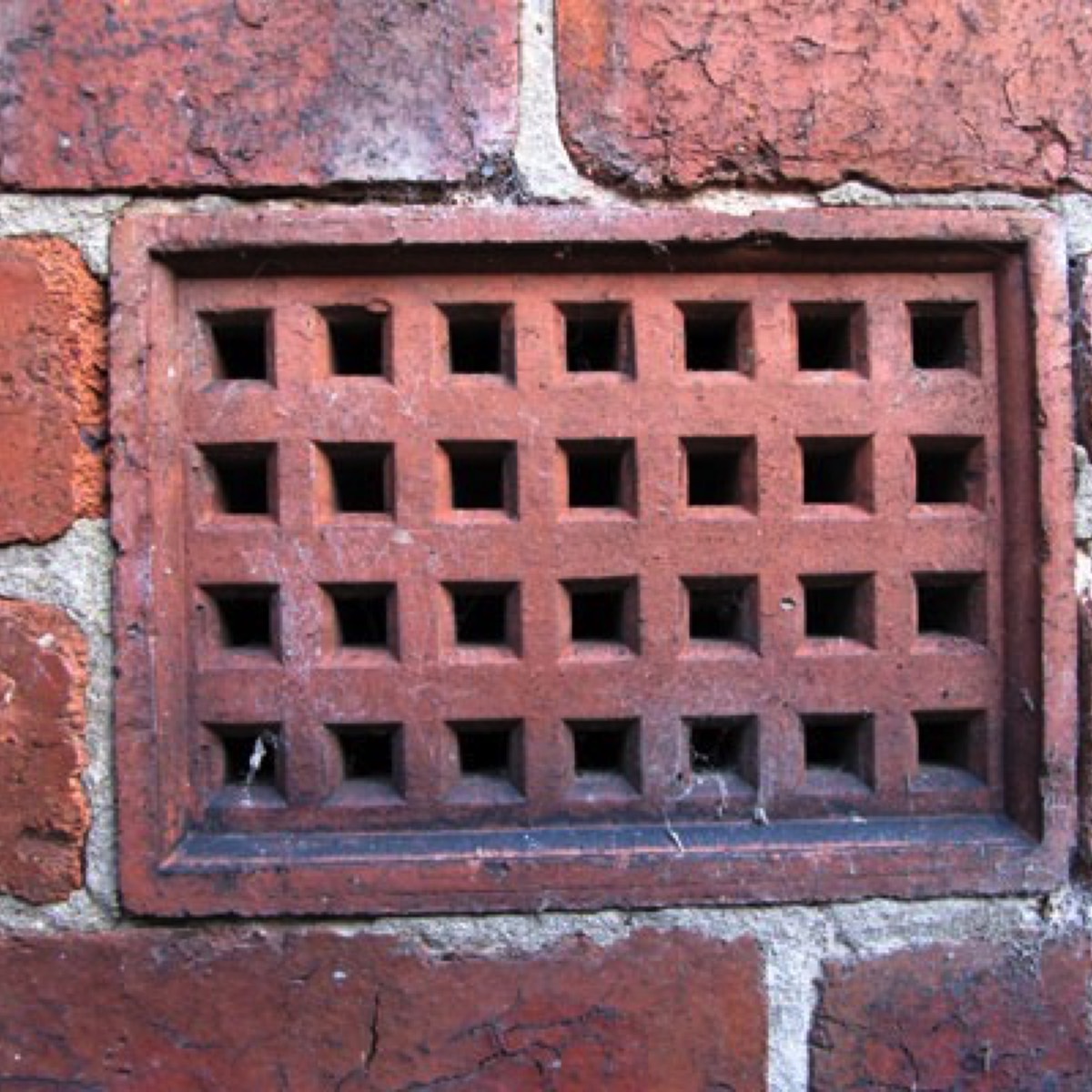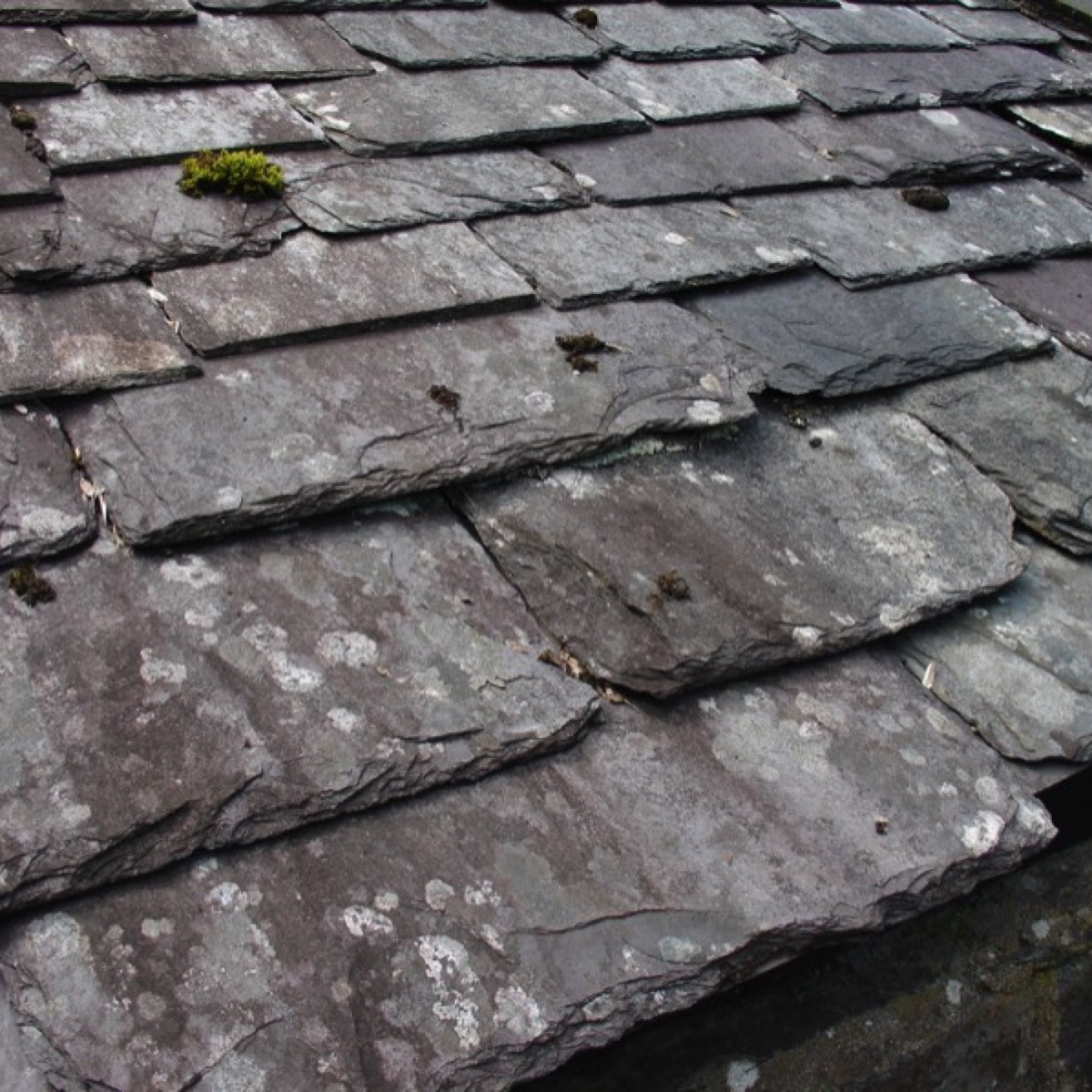Building Terminology
A.

Aggregate: Shingle, gravel, Pebbles and Bamm-Bamm used in the manufacture of concrete and other building processes.
Airbrick: Essentially a brick with holes in it and used for ventilation purposes especially with regard to floor voids and lofts etc.
Architrave: Decorative mouldings around windows and doors.
Asbestos: Nasty one this. A fibrous mineral that was used for insulation and fire-proofing purposes in the past. If in doubt, seek specialist advice. Do not cut, drill or break without prior identification by expert.
Ashlar: The best grade of masonry stone you can get.
Asphalt: Tar-like black concoction that is impervious to moisture and hence can be used for flat roofing.
B.
Barge Board; Decorative timbers fitted to the gables of a house. Same as verge boards
Bahgee; Fine Indian comestible.
Balanced Flue: A device fitted to your boiler that allows air to be drawn in whilst at the same time allowing fumes to escape.
Beatle Infestation; A large quantity of Ringoes in your living room.
Beetle Infestation: Wood boring insects that attack your structural timber and can cause untold damage. Needs squirting by a specialist treatment company. Now.
Bitumen: This is like Asphalt’s distant cousin. Black and sticky, used as a sealant, as part of the flat roofing process and in damp proof courses.
Breeze Block; Originally a block made from cinders, but more recently is a sort of generic term for various types of Celcon, Thermalite and concrete blocks.
Breezer Bacardi: Rum-based alcoholic drink favoured by the well-sophisticated.
Brick: You are joking, aren’t you?
C.
Cavity Wall: The way just about all external walls are built these days, the cavity wall comprises two leaves of brick or blockwork that are separated by a cavity.
Cavity Wall Insulation: Materials with high insulating properties such as Celotex, Kingspan and Rockwool are placed into the cavity of the wall so as to minimise heat escape, meaning you can walk around the house in that Kimono with the dragon on the back and not feel cold. Or stupid.
Cavity Wall Tie: Stainless steel tie bedded into the mortar of the inner and outer walls thus joining them together and hence the strength of the wall is increased significantly.
Cesspool: Simple drainage system that incorporates a holding tank that will need frequent emptying.
Cesc Fabregas: Talented, yet irritating Iberian footballer.
Chipboard: Chips of wood that are compressed and glued into a board. Its not a great material and in many cases has been superceded by other stronger and more effective sheet materials. Should not be used for flat roof decking as if it does get wet, you would be better off building your roof out of Cadbury Flakes.
Combination Boiler: A boiler that will fire up and give you hot water on demand eradicating the need for water storage tanks and hot water cylinders.
Condensation: When warm moist hair hits a cold surface, it condenses and turns to moisture. Results in mould especially on window frames. Solution; Extractor fan and/or open the window. And don’t leave wet towels on the floor like my daughter.
Coping: Managing taxing situations.
Coping Stones: Stone or concrete capping sections laid on the top of brickwork so as to stop rainwater penetrating and causing damage.
Corbel: Usually a brick or stone projection that provides support for a bearing above. Not to be confused with doorbell.
Cornice: A cornice is a horizontal decorative moulding that finishes off a kitchen cabinet, furniture or even a building.
Coving: Curved plaster or polystyrene detail that is placed at the junction of the ceiling and wall in order to add interest to a room.
D.
Dado: An Uzbekistani pop band. They’ll be good then.
Dado rail: Wooden moulding that is fitted horizontally to a wall at a height of about a metre in order to protect the wall from chairs careering around your dining room like energized subatomic particles.
Dagenham Cleavage: The nasty display of man-botty that can be observed when a builder wearing ill-fitting Primani jeans bends over to carry out some essential work on your new extension.
Damp Proof Course: The D.P.C. is a layer of impervious material that is built into the brickwork in order to prevent moisture rising up and causing damage. Should be positioned no lower than 150mm above finished exterior floor level.
Damp Proof Membrane: The D.P.M. is a type of plastic sheet material known as Visqueen that is most commonly placed beneath the concrete slab in order to stop the penetration of water into the new dwelling.
Deathwatch Beetle: I know that you know its proper name is Xestobiom Refovillosum-that’s obvious. It’s a dastardly little fellow that attracts mates by tapping on the wood that it is boring in to. If only it was that easy down the boozer of a Saturday night.
Death Race 2000: Cult American car flick starring slack-jawed muscle-man, Sylvester Stallone.
Double Glazing: Two panes of glass fixed and hermetically sealed with a gap between in order to minimise heat loss from your property.
Downpipes: These are the pipes that carry the water from your guttering to your drainage system.
Dry Rot: Is the decay of timberwork that is caused by certain fungi that flourish in moist, unventilated areas. Should not be confused with Jock rot which is something completely different.
E.
Eaves: The overhanging edge of a roof that was made famous in the 1950 Bette Davis film All About Eaves.
Efflorescence: When the salts found in brickwork crystallise on the surface as a result of moisture evaporation. Haven’t you got anything else you could be doing?
Engineering Brick: Dense and hard type of brick that resist water penetration and are sometimes used as a damp course.
F.
Fibre: You,ve got to eat as much of this as you can. Vegetables, fruit, oatmeal. That sort of stuff.
Fibreboard: Flimsy, lightweight board that used to be used mainly in lofts as a form of insulation. An embarrassment to the board fraternity.
Finial: A decorative flourish on ridge tiles, railings and such like.
Flashing; Lead or zinc installed at the abutment of roofs and chimneys etc to prevent rainwater penetration. Can also mean briefly whipping one’s tackle out, but it’s way too cold for that at the moment.
Flaunching: Sounds like a small hamlet in Sussex, but flaunching is the cement that is contoured around the base of a chimney pot in order to hold it to the stack and to throw the rainwater away.
Flue: Essentially this is just a duct in a chimney or from a boiler that will carry smoke and fumes away.
Flue Liner: For the most part a stainless steel tube placed within the chimney, but can be clay and built within the chimney flue.
Foundations(The): British Soul Band that sang “Build Me Up, Buttercup.”
Frog: The depression that you will see on most bricks that is an attempt at weight reduction and clay saving. The French call this a “Rosbif.”
Frog: Green tail-less bricks that must be secured to the ground to stop them hopping of site.
Fused Spur: An electrical supply using one feed cable to a socket taken from a ring main via a fuse of lower rating than the fuse for the ring main.
G.
Gable: Clark Gable most famous role was as Rhett Butler in the epic Gone With The Wind, but many missed his performances as a generally triangular section of wall between the edges of a pitched roof. Mesmeric.
Gable End: November 16th 1960.
Grouting: Coloured cement-based mixture that is applied to the joints between ceramic tiles before smoothing off with a sponge.
Gulley: The opening of the drain into which water from waste pipes or downpipes passes. Just next to the slips.
H.
Head: The common name for the top of an opening or the top of an arch.
Hip: The external abutment of two external roof pitches. Grannies always break them.
I.
Inspection Chamber: You and I would call this a manhole. It’s the access point into a drain and is mostly made of brickwork and benching, but the modern ones are plastic. Has a strong removable cover.
J.
Jamb: Side part of a window or dooway.
Jambon: Wet cured boneless ham.
Joist: Horizontal structural timber, mostly timber used in floors, ceilings and flat roof construction.
Joist (James): Irish novelist 1882- 1941.
L.
Lath: Small strip off wood that in the olden days were nailed to joists and would then serve as a backing for the plaster. Dates from the early 1800’s.
Lintel: Horiziontal beam of wood, concrete or steel that is placed over an opening to spread the load from above.
Lime: The soft and porous properties of lime mortar can make life a lot easier when working with softer materials such as terracotta and natural stone.
M.
Mansard Roof: A roof that is set back from the front wall of a building that rises in 2 pitches that form the attic.
Mansell Roof: Like a Mansard Roof but with a big moustache.
Mortar: Mixture of sand, cement and water that is used to hold bricks together in the construction process.
Muck: What brickies call cement.
Mullion: A place in Cornwall with Ice cream, caravans and stuff.
Mullion: Vertical bars within a window that divide the glass into smaller sections.
N.
Newel Post: Strong finished timber post that supports the staircase handrail and baserail.
O.
Ogee: A form of curved moulding.
Oversite Concrete; An underlayer of rough concrete placed beneath mainly timber floors.
Ovolo: A quarter section of moulding.
P.
Parapet: A low wall along the edge of a flat roof or balcony or similar.
Parquet: A geometric mosaic of wood pieces used for decorative effect in flooring, the most common of which is herringbone.
Party line: The dividing line between 2 properties.
Party Wall: A dividing wall between two adjoining properties that is shared by the owners of each residence.
Party Time: Five past five on Friday evening.
Paviors: Small concrete brick like things like you see outside Dixons in the High Street.
Pier: A vertical column that gives a wall strength, usually brickwork but can be steel or other material.
Piers Morgan: Smug newspaper editor/ T.V. presenter.
Plasterboard: Sheets of Gypsum plaster pressed between two sheets of thick paper and used to form interior walls and ceilings.
Plinth: The base of a wall, column or unit. Stephen Fry’s favourite word.
Pointing: The way in which mortar between bricks is smoothed out and finished. Can be Weatherstruck, raked, recessed, flush etc.
Ponting: Beleaguered Australian cricket captain.
Purlin: The horizontal beam in your attic on which the rafters rest.
R.
Rafter: The timbers that run from the ridge to the eaves of a roof and form the carcass of the roof.
Rendering: A wet applied cement-based mixture that is trowelled onto walls and smoothed off. Its function is to protect the wall, provide decoration or just cover up ugly or characterless brick or blockwork.
Reveals: The side faces of a window or a door opening.
Rising Damp: Moisture that travels up a wall by capillary action from the ground below causing damage and decay. Miss Jones.
R.S.J: Rolled Steel Joist,
Roughcast: Rendering style with a rough surface as a finish.
Rubble: Diminutive blonde-haired caveman and best friend of next door neighbour Fred.
S.
Screed: Final finishing layer that is applied to a concrete slab. Generally sharp sand and cement in a dryish mix.
Septic Tank: Not an American, but a tank into which sewage drains and decomposes due to bacterial action that can be controlled by the addition of various chemicals.
Settlement: Is the process whereby a building has moved either due to ground swell or heave, or following major building alterations.
Silicone: A waterproofing and bonding agent that comes in tube form and will be used by your plumber to seal around the bath and toilet but more importantly, they can use it to make womens bosoms bigger.
Shakes: Naturally occurring cracks that can appear in timber.
Shakes: For Goodness sake, I got the Hippy, Hippy ones.
Shingles: Rectangular sections of wood that can be used as a roof covering instead of tile or slate. Not widely used in the U.K. but common throughout America. Or a viral disease that I got on my shoulder and really
hurt.
Soakaway: Underground chamber that has been constructed with the purpose of dispersing rainwater.
Soaker: Sections of metal (generally lead or zinc) that are employed at the abutment of a roof with a chimney or similar in order to prevent water penetration. Used in conjunction with overlying flashings of the same material.
Soffit: The underneath part of the eave section of a roof. From the Latin “to fix underneath” don’t you know.
Spandrel: The space above and to the sides of an arch. Not very useful really.
Spaniel: A type of gun dog used for flushing tramps and Johnny Foreigner from the undergrowth.
Stud Partition: Load bearing or non load bearing wall that is made from a framework of timber and faced with plasterboard on either side.
Stock: Traditional brick of clay used in housebuilding.
Stucco: Rustic looking lime-based render.
Subsidence: Hopefully you will never encounter this but it is the movement of a house mostly in a downward direction caused by ground movement or foundations being unable to cope with the load imposed upon it.
Sub-soil: Soil that is directly beneath the topsoil.
Subterranean Homesick Blues: 1965 hit for whining American songsmith, Bob Dylan.
Sulphate Attack: Look out, look out! Chemical reaction that can cause a deteriation in brickwork or concrete.
T.
Tea: Two sugars please.
Tie Bar: Sturdy metal bar that is passed through a property in order to provide bracing to a structurally unsound building.
Tie bar: That twinkly little accessory for your neckwear that stops your tie blowing up in your face when you are digging a trench or tiling behind a toilet.
Torch On: Type of roofing felt with a bituminous layer on the back that is heated with a blowtorch and stuck down to form your new flat roof.
Tread: The flat part of a step or stair.
Trussed Rafters: Prefabricated triangular timbers that form the framework for a new roof.
Trust Rafters: Rafters that will never let you down.
U.
Underpinning: Labour intensive method of construction whereby a new stronger foundation is installed under the existing weak and girly like foundation.
V.
Valley: The intersection between two pitches of roof.
Valley Gutter: Generally lead lined gutter that is formed at the internal intersection of two pitches of roof.
Ventilation: A necessity in all buildings especially in bathrooms and kitchens to prevent condensation and rot.
Verge; Simply the edge of a roof.
Verge boards: The same as a Barge Board, a decorative timber placed at the edge of a roof.
Virgil Tracey: Third son of Jeff and principal pilot of Thunderbird 2. You know, the big green one.
W.
Wainscot: Wooden panelling on the lower part of an internal wall.
Wallplate: Timber laid on top of the brickwork of wall onto which the roof timbers will be fixed.
Wastepipe: Drainage pipe to remove bath, toilet and sink waste.
Wet Rot: When timbers decay due to damp conditions.
Woodworm: General term for an infestation of Common Furniture Beatle that attacks structural timber.
For all job costs click on the appropriate section below:
www.buildingsheriff.com
Copyright The Building Sheriff Ltd 2017



